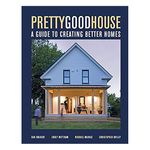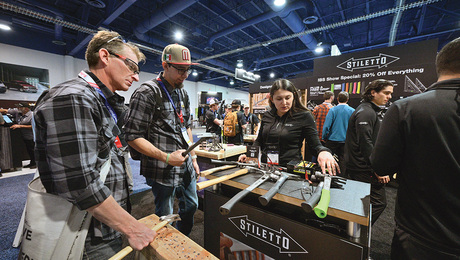Construction Pricing: Line Item or Lump Sum
Is it better to provide line-item pricing or lump-sum pricing? Transparency is not trust.

If you sell construction services, you have had to deal with the following question from a client:
“Can you break out the price of each line item?”
How you respond to this question can determine your customer’s level of trust and affect the project’s margin.
Many types of construction projects require line-item pricing, such as commercial and governmental projects. If you want to compete for these types of projects, you will have to show line-item pricing on your bids. Line-item pricing may not be a requirement, but it can be a request on residential projects.
Residential project owners often request line-item pricing because they want to ensure that they aren’t overpaying for any particular item. They want to keep the contractor in check, but this is the inherent problem. Owners do not know the cost of construction services in the first place.
LINE-ITEM PRICING QUESTIONS
How can customers analyze the price for a particular line item?
Does the line-item price include the appropriate overhead and profit?
Should the contractor show the overhead and profit as separate line items?
What’s the appropriate amount for overhead and profit?
LINE-ITEM PRICING IS OPEN TO INTERPRETATION
Line-item pricing, much like cost-plus contracts, is open for interpretation. (See this post for my take on cost-plus contracts.) The contractor runs the risk of having to translate each of the line items for the customer.
LUMP-SUM PRICING CREATES FOCUS
Lump-sum pricing leaves little to get lost in translation. Lump-sum pricing allows the contractor and the owner to focus on the right things—the overall scope of the work and the price for that specific scope of work.
The total price of a construction project is rarely one or two big line items but a combination of many smaller items that add up. Contractors that focus on developing a lump-sum proposal establish a higher level of trust with customers, eliminate confusion, and maintain their margins.
I know it may seem counterintuitive, but hang with me for a second. I will explain.
LINE-ITEM PRICING COSTS CONTRACTORS
A contractor can lose money by providing a price for each line-item proposal because the proposal looks like a shopping list. This leads the customer to question the big ticket items and wastes the time of the contractor. The customers think that if they eliminate some of the items from the scope, like putting items back on the shelf before checkout, they can save money on the project.
Reducing scope (eliminating work) and value engineering (proposing alternate specifications and methods) are great ways to stay within a given budget, but often the customers want to put items back “on the shelf” that aren’t practical to the production goals of the project.
For example, as much as the customers think they can do the demo, you know that they can’t. As much as customers think they can save money by buying their own materials, they won’t.
LINE-ITEM PRICING CONFUSES THE CUSTOMER
In addition to those examples, providing a line-item price to your customer for your “go-to” plumber, mason, framer, etc., may inspire your customer to try to find someone cheaper. For most contractors, their subcontractors are part of their team. They have spent years developing the relationship, level of service, and quality that they expect. Using another subcontractor is a deal breaker.
If your subs are nonnegotiable, why provide the price?
This may cause confusion with your customers. They don’t understand why your sub is changing that much when another sub would charge less.
How do your customers know the price of other subs?
They took the list you gave them and went shopping. They didn’t go shopping for all the line items, though. They didn’t shop for trades like excavation, foundations, or masonry. They don’t really know what those trades do, but they did shop your plumber, your electrician, and your painter. Those subs are easy to understand and easy to find. That’s when the confusion set in.
Line-item pricing creates confusion for customers. What they think is overpriced in your proposal as compared to the shopping they did may be the correct amount when your overhead and profit is accounted for.
LINE-ITEM PRICING EXPOSES PROPRIETARY INFORMATION
If you explain that the price of that line item includes overhead expenses and profits for your company, then the customers may want to know what your overhead expenses and profits are. You risk exposing proprietary information if you share your overhead and profit numbers with the owners, and you risk eroding trust with them if you don’t.
They want to know the real numbers, and you won’t tell them. This makes you look bad.
They want to know the real numbers, and you do tell them. They think you charge too much. This also makes you look bad.
The way in which you run your business is none of the customer’s business. Your overhead expenses and profits are your operating system. This operating system is unique to your business.
A customer who asks for your overhead and profit numbers is the same as a contractor who asks customers about their personal salaries or requests to see their bank statements. This information is personal and private. Your overhead and profit numbers are the same thing—unique and proprietary to your business.
DEVELOP A PROCESS FOR LUMP-SUM PRICING
Providing lump-sum pricing to customers does not mean that you don’t share any specific pricing for items in the scope of work. In fact, you should discuss the components that make up the budget. But developing the budget is not the same as quoting the work.
Lump-sum pricing works best when you have all the information for the project and have developed a detailed scope of work. If you don’t have all the information, then you can’t quote the work. You may discuss a budget range for the undefined areas of the scope of work, but this is not a quote.
You can’t quote what you don’t know. Don’t do it.
Quote what you can quote, and give appropriate budget ranges for everything else.
The best way to navigate the swirling waters of the line-item pricing request is to develop a process that solves your customers’ problems and eliminates surprises. Your customer may request line-item pricing. That’s fine. You need to respond with why you don’t provide line-item pricing and how that actually serves them.
RESPONSES TO A CUSTOMER’S REQUEST FOR LINE-ITEM PRICING
For example:
Your potential customer asks, “Can you provide line-item pricing?” You respond, “We don’t provide line-item pricing because we don’t price your project that way. We develop the entire scope of work first and then price the project as a whole. In the past, when we did provide line-item pricing, we discovered that it created confusion with our customers, and we didn’t want to do that anymore. So we don’t provide line-item pricing, but we would be happy to discuss the price of any particular area of the scope of work. Are there any areas of concern on this project that we need to discuss before we get into the design and planning phase of the proposal process?”
If you have a response like that prepared for the line-item pricing request, then you will be able to focus the owner’s attention on your process. Selling a process that provides an exceptional experience is what most customers really want anyway.
LUMP-SUM PRICING PROCESS
Here’s the an outline of a lump-sum pricing process or a process to avoid line-item pricing:
1. Prequalify your prospect.
Not every prospect who contacts you is a good fit. Develop at least three criteria that your ideal clients meet, and only work with the people that fit that criteria. (Hint: You should discuss the budget as one of your criteria.)
2. Develop a detailed scope of work.
Sell the customer a preconstruction process that pays you to develop the proper scope of work. This is not the estimate. That happens in step 1. This is the proposal. This is work. Professionals get paid for work.
3. Discuss the options and associated budgets.
This is where you make sure there are no surprises. Show the customer what you have quoted and the information you still need.
4. Describe the production process.
Explain what to expect when the production work starts and how it will progress. Remember: Your customers have no idea how fast, slow, expensive, noisy, muddy, exciting, exhausting, and thrilling a construction project will be. Don’t overwhelm them, but set the proper expectations.
5. Explain the contract execution process.
Make sure your customers understand the contract. The contract should explain everything from what you are doing, to how you are doing it and when it should be done, to how the customer is going to pay for it. Your contract is a sale tool; it closes the deal. It should be a collection of all of the information about the project in an easy-to-understand format.
If you want to avoid confusion with your customers and maintain the margins of your projects, then avoid line-item pricing.
LINE-ITEM PRICING DOES NOT ESTABLISH TRUST
Line-item pricing does not establish trust with your customers. Your customers may appreciate the so-called transparency of line-item pricing, but transparency is not trust. Transparency should be a two-way street.
I recently listened to Rachel Botsman on the Building a Story Brand Podcast. She stated, “If you need things to be transparent, you’ve given up on trust. They’re not bedfellows.”
I agree. You don’t need trust if you can see everything. You just need the right monitors in place to document the transactions.
Trust is at the heart of the contractor/customer relationship. When you provide line-item pricing, the focus of the relationship shifts from the abilities, reputation, and qualifications of the contractor to the price. Trust never has a chance to develop because no one is nurturing the trust.
Contractors who establish trust with their clients by delivering a process that produces consistent results will not have to use the mirage of transparency in order to please a customer.
Transparency is not trust. Line-item pricing may seem like transparency, but in reality it is a one-way mirror through which your customers are interrogating you.
…
Thanks for taking the time to read this article. I really appreciate you and value your time. Please leave a comment below if you have any questions about how to avoid the line-item pricing trap.
Follow me on YouTube, Instagram @shawnvandyke, LinkedIn, Facebook, or shawnvandyke.com to learn more about how to streamline your construction business. My new book Profit First for Contractors will be released later this year. Follow the @ProfitFirstContractor account on Instagram for more information about the release of the book.
Fine Homebuilding Recommended Products
Fine Homebuilding receives a commission for items purchased through links on this site, including Amazon Associates and other affiliate advertising programs.

Pretty Good House

A House Needs to Breathe...Or Does It?: An Introduction to Building Science

All New Kitchen Ideas that Work





























View Comments
Thanks Shawn, lump sum is how we operate though we have strayed to line item several times, but only with clients we connected with. However, recently, we have been receiving more line item requests and clumsily try to explain why we will not move forward with this type of agreement. Your article will aide us in comfortably addressing these requests.
Thanks,
john